Table of contents
Imagine intricate threads whispering tales of tradition, wood singing under the caress of a chisel, and clay molded into timeless beauty.
The Moradabad Brass Crafts orders for idols shot up with the Consecration ceremony of the Ram Temple in Ayodhya.

Moradabad Brass Craft
- The Moradabad Brass craft was awarded the Geographical Indication (GI) tag in 2013 by the Government of India.
- The craft is centuries old, and it is renowned for its intricate designs, skilled craftsmanship, and use of high-quality materials.
- The GI tag covers a wide range of brassware products, including utensils, figurines, lamps, and candlesticks.
What is a GI tag?
A Geographical Indication (GI) tag is a distinctive sign used on products that have a specific geographical origin and possess qualities or a reputation that are essentially due to that origin. It serves as a form of intellectual property protection, safeguarding the unique identity and value of these products.
Key requirements for obtaining a GI tag:
- Distinct geographical origin: The product must originate from a specific region or locality.
- Unique qualities or reputation: The product must possess characteristics or a reputation that are attributable to its geographical origin, such as climate, soil, traditional methods, or unique ingredients.
- Link between origin and qualities: There must be a clear link between the product's qualities and its geographical origin.
- Reputation: The product must have a well-established reputation in the region and beyond.
Rules and regulations for GI tags:
- Application process: A group of producers or an authorized organization can apply for a GI tag through the National Intellectual Property Office.
- Registration and protection: Once registered, the GI tag is protected under national law for a specified period, usually 10 years, with the possibility of renewal.
- Usage restrictions: Only producers within the designated geographical area can use the GI tag on their products.
- Enforcement: Legal measures are in place to prevent unauthorized use of GI tags, protecting both producers and consumers.
- Compliance: Producers must adhere to defined standards and production methods to maintain the quality and reputation associated with the GI tag.
Benefits of GI tags:
- Protecting authenticity: Ensures consumers get genuine products from the designated region.
- Promoting local economies: Gives producers a competitive edge and supports regional development.
- Preserving cultural heritage: Safeguards traditional knowledge, skills, and practices associated with regional products.
- Enhancing global recognition: Builds recognition and value for unique products in international markets.
- Encouraging sustainable practices: Often promotes sustainable production techniques and environmental conservation.
This symphony of skill and heritage takes center stage today, as we look into 23 Indian handicrafts that received the coveted Geographical Indication (GI) tag in 2022-23.
Mahoba Gaura Patthar Hastashlip (Uttar Pradesh)
- Origin: Mahoba district, Uttar Pradesh
- Material: Gaura stone, a soft, white stone found in the region.
- Technique: Carving, engraving, and polishing
- Products: Bowls, plates, vases, sculptures, and other decorative items
- Significance: Represents a centuries-old tradition of stone carving in Mahoba, known for its intricate designs and vibrant colors.
Mainpuri Tarkashi (Uttar Pradesh)
- Origin: Mainpuri district, Uttar Pradesh
- Material: Brass wire, wood, and other materials
- Technique: Inlay work that uses brass wire to create intricate designs on wood.
- Products: Boxes, furniture, lamps, and other decorative items
- Significance: Represents a centuries-old tradition of inlay work in Mainpuri, known for its intricate designs and use of traditional materials. The art form is said to have originated in the 17th century.
The artisans of Mainpuri use a hammer and chisel to cut the wood, and they use a variety of needles and awls to create intricate patterns. The brass wire is then hammered into place.

Sambhal Horn Craft (Uttar Pradesh)
- Origin: Sambhal district, Uttar Pradesh
- Material: Buffalo Horn
- Technique: Carving, engraving, and polishing
- Products: Bowls, plates, vases, sculptures, and other decorative items
- Significance: Represents a centuries-old tradition of horn carving in Sambhal, known for its intricate designs and use of natural materials.
The horn is a durable material that can be carved into a variety of shapes and patterns.
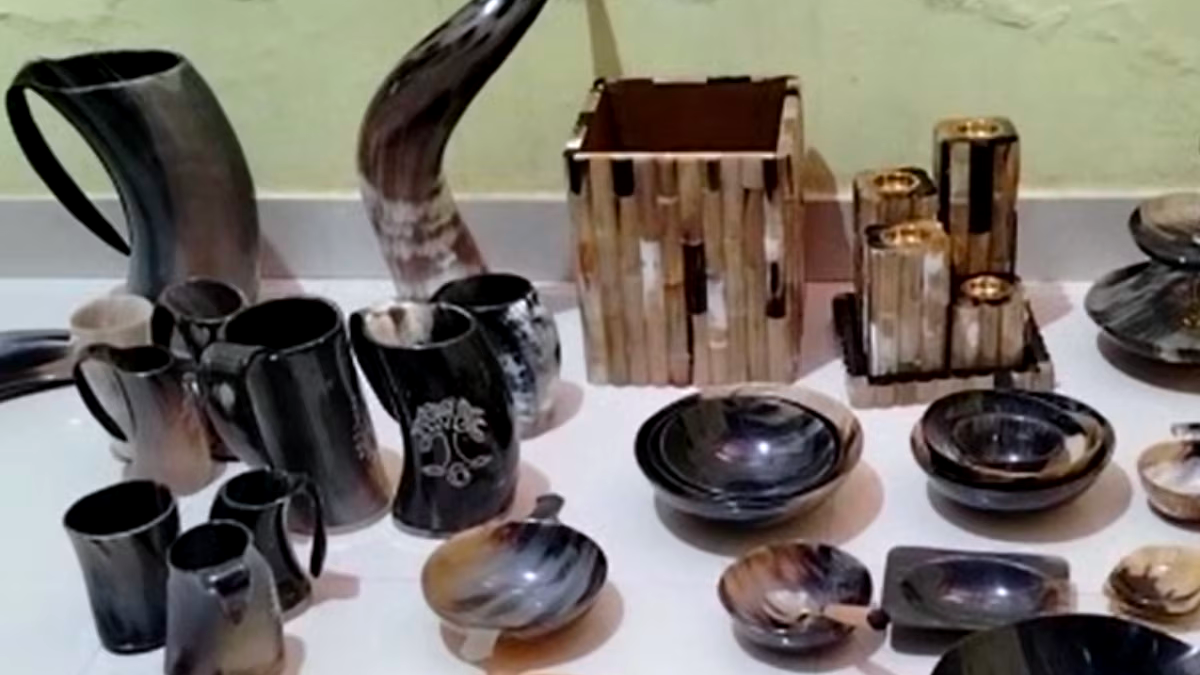
Basohli Painting (Jammu & Kashmir)
- Origin: Basohli village, Kathua district, Jammu & Kashmir
- Style: Miniature painting characterized by bright colors, bold lines, and intricate details.
- Themes: Hindu mythology, epics, historical scenes, contemporary themes.
- Technique: Mineral and vegetable pigments on paper prepared with a paste of lime and gum Arabic.
- Significance: Preserved a rich artistic tradition dating back to the 17th century, recognized for its unique style and storytelling abilities.
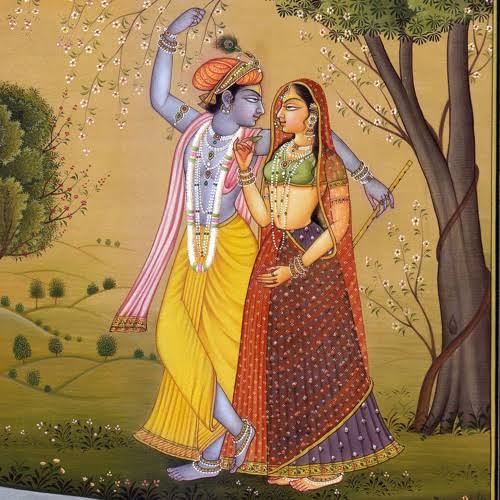
Basohli Painting
Negamam Cotton Saree (Tamil Nadu)
- Origin: Negamam village, Kanchipuram, Tamil Nadu
- Fabric: Fine handspun cotton, known for its lightweight and breathable texture.
- Weave: Traditional 'korai' (double ikat) technique, creating elaborate geometric patterns.
- Designs: Chessboard patterns, stripes, paisleys, and temple motifs
- Significance: Celebrated for its intricate weaving and vibrant colors, a symbol of Tamil Nadu's textile heritage.
Ladakh Shingskos (Wood Carving) (Ladakh)
- Origin: Ladakh region, Jammu & Kashmir
- Material: Apricot wood, known for its durability and fine grain
- Carving style: Intricate geometric patterns, floral motifs, and religious figures
- Products: Prayer wheels, furniture, decorative items
- Significance: Reflects the Buddhist culture and artistic traditions of Ladakh, each piece infused with spiritual significance.
Pashmina Wool of Ladakh (Ladakh)
- Origin: Changthang Plateau, Ladakh
- Material: Undercoat wool of Changthang goats, known for its exceptional softness and warmth
- Quality: Finer and warmer than regular cashmere, with a luxurious feel
- Products: Shawls, scarves, sweaters, and other garments
- Significance: Renowned for its unparalleled quality and unique provenance, a prized possession for many.
Ujjain Batik Print (Madhya Pradesh)
- Origin: Ujjain City, Madhya Pradesh
- Technique: Resist dyeing with wax and vegetable dyes, creating intricate patterns
- Designs: Floral motifs, geometric patterns, mythological figures, and paisley designs
- Products: Sarees, sarongs, fabrics, and home decor items
- Significance: Represents a centuries-old artistic tradition, known for its vibrant colors and detailed motifs.
Ujjain Batik Print
Gwalior Handmade Carpet (Madhya Pradesh)
- Origin: Gwalior City, Madhya Pradesh
- Weave: Persian knotting technique, known for its durability and intricate patterns
- Materials: Silk, wool, and cotton, creating rich textures and vibrant colors
- Designs: Traditional Persian motifs, floral patterns, geometric designs, and customized scenes
- Significance: Renowned for its intricate craftsmanship and timeless elegance, a treasured heirloom for generations.
Gwalior Handmade Carpet
Waraseoni Handloom Saree & Fabrics (Madhya Pradesh)
- Origin: Waraseoni town, Balaghat district, Madhya Pradesh
- Weave: Traditional 'Kotadoria' weave, creating textured and patterned fabrics
- Materials: Cotton, silk, and zari, offering diverse textures and rich colors
- Designs: Geometric patterns, stripes, borders, and temple motifs
- Significance: Showcases the unique weaving tradition of Waraseoni, known for its versatility and affordability.
Waraseoni Handloom Saree & Fabrics
Jabalpur Stone Craft (Madhya Pradesh)
- Origin: Jabalpur district, Madhya Pradesh
- Material: Sandstone, known for its versatility and easy carving properties
- Techniques: Carving, sculpting, chiseling, and polishing
- Products: Sculptures, figurines, temple decorations, and architectural elements
- Significance: Embodies the ancient stone carving tradition of Jabalpur, creating awe-inspiring pieces with intricate details.
Jabalpur Stone Craft
We can't clear UPSC for you.
But with our personalised mentor support, you'll be ready to do it yourself.
Mata ni Pachhedi (Gujarat)
- Origin: Gujarat
- Material: Cotton
- Technique: Hand-block printing
- Designs: Traditional motifs and designs inspired by Hindu mythology and folklore
- Products: Wall hangings, bedspreads, tablecloths, and other home décor items
- Significance: Represents a centuries-old tradition of textile printing in Gujarat, known for its vibrant colors and intricate designs.
The artisans of Gujarat use wooden blocks carved with traditional motifs, which they then use to apply color to the fabric. The fabric is then dried and steamed to set the colors.
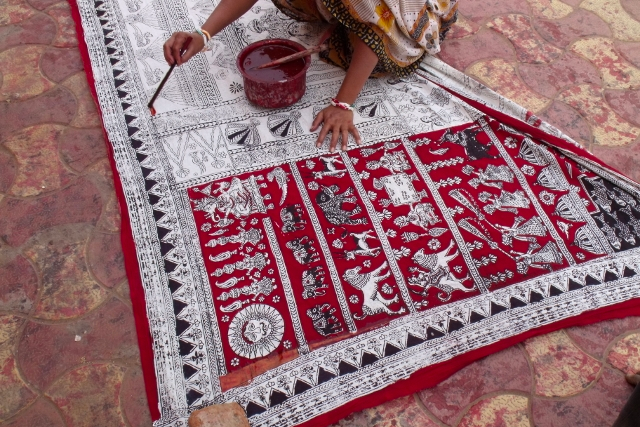
Mata ni Pachhedi
Wrought Iron Crafts of Dindori (Madhya Pradesh)
- Origin: Dindori district, Madhya Pradesh.
- Material: Wrought iron
- Technique: Handcrafting. The artisans of Dindori use hammers, chisels, and other tools to shape the iron into intricate designs. The iron is then heated and cooled to give it strength and durability.
- Products: Gates, railings, furniture, and other decorative items
- Significance: The centuries-old tradition of wrought ironwork in Dindori is said to have originated in the 15th century.

Wrought Iron Crafts of Dindori
Manamadurai Pottery (Tamil Nadu)
- Origin: Manamadurai district, Tamil Nadu
- Material: Clay
- Technique: Handcrafting
- Products: Domestic utensils, decorative items, and temple artifacts
- Significance: The craft is said to have originated in the 10th century. And is known for its fine craftsmanship and durability.
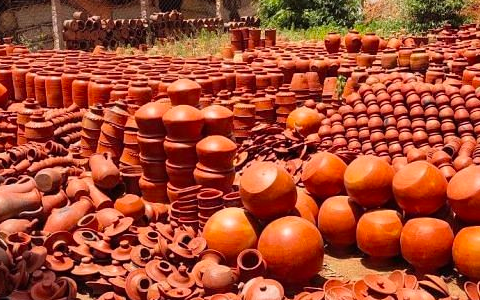
Manamadurai Pottery
Thaikkal Rattan Craft (Tamil Nadu)
- Origin: Kanchipuram district, Tamil Nadu
- Material: Rattan
- Technique: Handcrafting. Artisans use a variety of knives and chisels to shape the rattan, and then weave it into intricate designs. The products are then finished with a lacquer to protect them.
- Products: Furniture, baskets, mats, and other decorative items
- Significance: The craft is said to have originated in the 12th century. It is known for its intricate designs and durability.
Aligarh Tala (Uttar Pradesh)
- Origin: Aligarh district, Uttar Pradesh
- Material: Brass
- Technique: Handcrafting and engraving
- Products: Locks, latches, door handles, and other decorative items
- Significance: Represents a centuries-old tradition of metalworking in Aligarh, known for its intricate designs and durability.
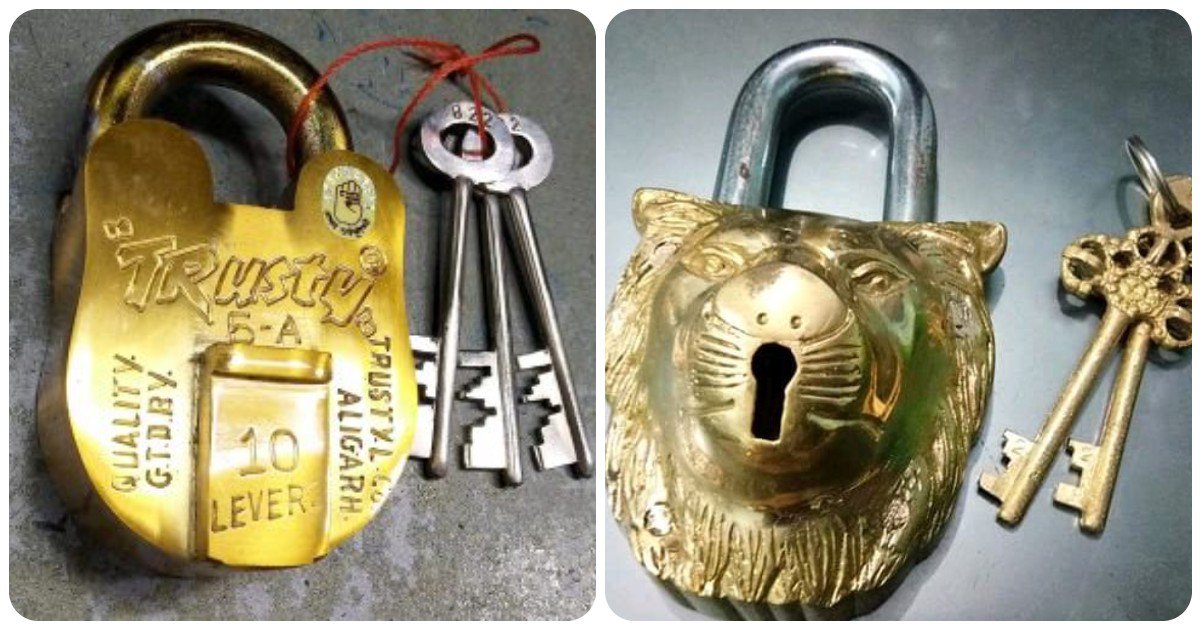
Bakhira Brassware (Uttar Pradesh)
- Origin: Bakhira village, Azamgarh district, Uttar Pradesh
- Material: Brass
- Technique: Handcrafting and hammering
- Products: Utensils, figurines, lamps, and other decorative items
- Significance: Represents a centuries-old tradition of brass craft in Bakhira, known for its unique, heavy-gauge brassware and intricate designs.
Bakhira Brassware
Banda Shazar Patthar Craft (Uttar Pradesh)
- Origin: Banda district, Uttar Pradesh
- Material: Black shale ('Shazar Patthar')
- Technique: Carving, engraving, and polishing
- Products: Sculptures, figurines, decorative items, and architectural elements
- Significance: Represents a unique tradition of stone carving in Banda, using the distinctive black shale for intricate artistic creations.
Banda Shazar Patthar Craft
Nagina Wood Craft (Uttar Pradesh)
- Origin: Nagina town, Bijnor district, Uttar Pradesh
- Material: Wood, primarily Sheesham and Rosewood
- Technique: Carving, inlay work, and polishing
- Products: Furniture, decorative items, sculptures, and intricate wood carvings
- Significance: Represents a centuries-old tradition of wood carving in Nagina, known for its intricate designs, intricate inlay work with ivory or bone, and elegant furniture pieces.
Nagina Wood Craft
Myladi Stone Carvings (Tamil Nadu)
- Origin: Myladi town, Thanjavur district, Tamil Nadu
- Material: Black granite ('Granulite')
- Technique: Carving, chiseling, and polishing
- Products: Sculptures of deities, animals, and human figures, figurines, temple decorations like pillars and panels, and architectural elements.
- Significance: Represents a centuries-old tradition of stone carving in Myladi, using fine-grained black granite for detailed and intricate sculptures and temple decorations.
Gond Painting (Madhya Pradesh)
- Origin: Madhya Pradesh, particularly among Gond tribal communities
- Material: Natural pigments on paper or mud walls
- Technique: Freehand painting with bold lines, vibrant colors like red, white, and black, and symbolic motifs representing nature, animals, and tribal deities.
- Products: Paintings, murals, and decorative items
- Significance: Represents the vibrant artistic traditions of Gond tribes, depicting their mythology, folklore, and connection to nature.
Gond Painting
Gamosa (Assam)
- Origin: Assam, India
- Material: Cotton
- Technique: Hand weaving with borders
- Significance: Represents a traditional Assamese garment worn for various occasions, symbolizing purity, respect, and identity.
It's worn by both men and women for various purposes.
It's a versatile rectangular cotton cloth with distinct, intricately woven borders, traditionally in white with red or other vibrant colors.
Gamosa
